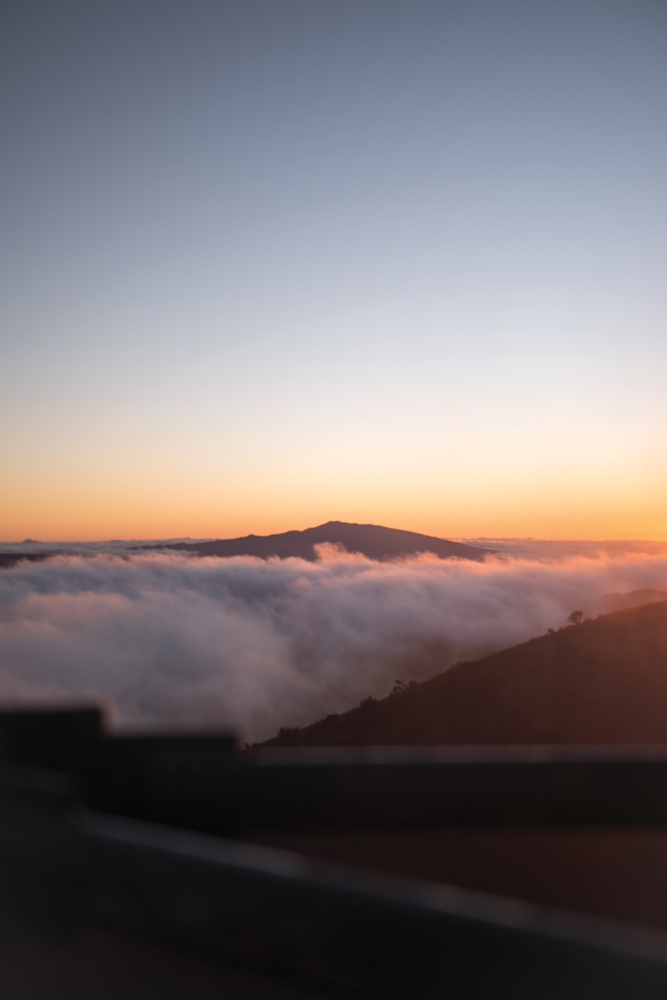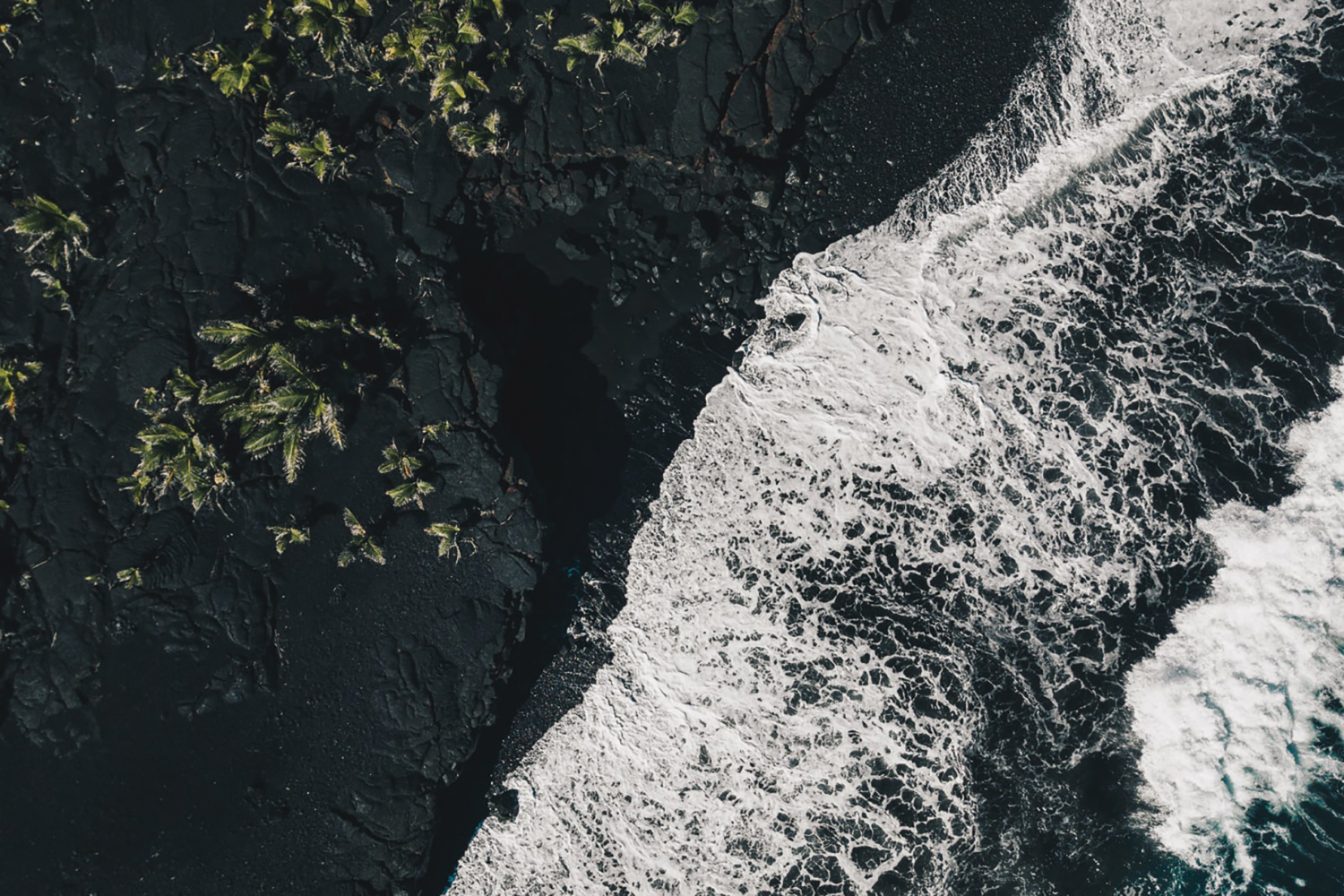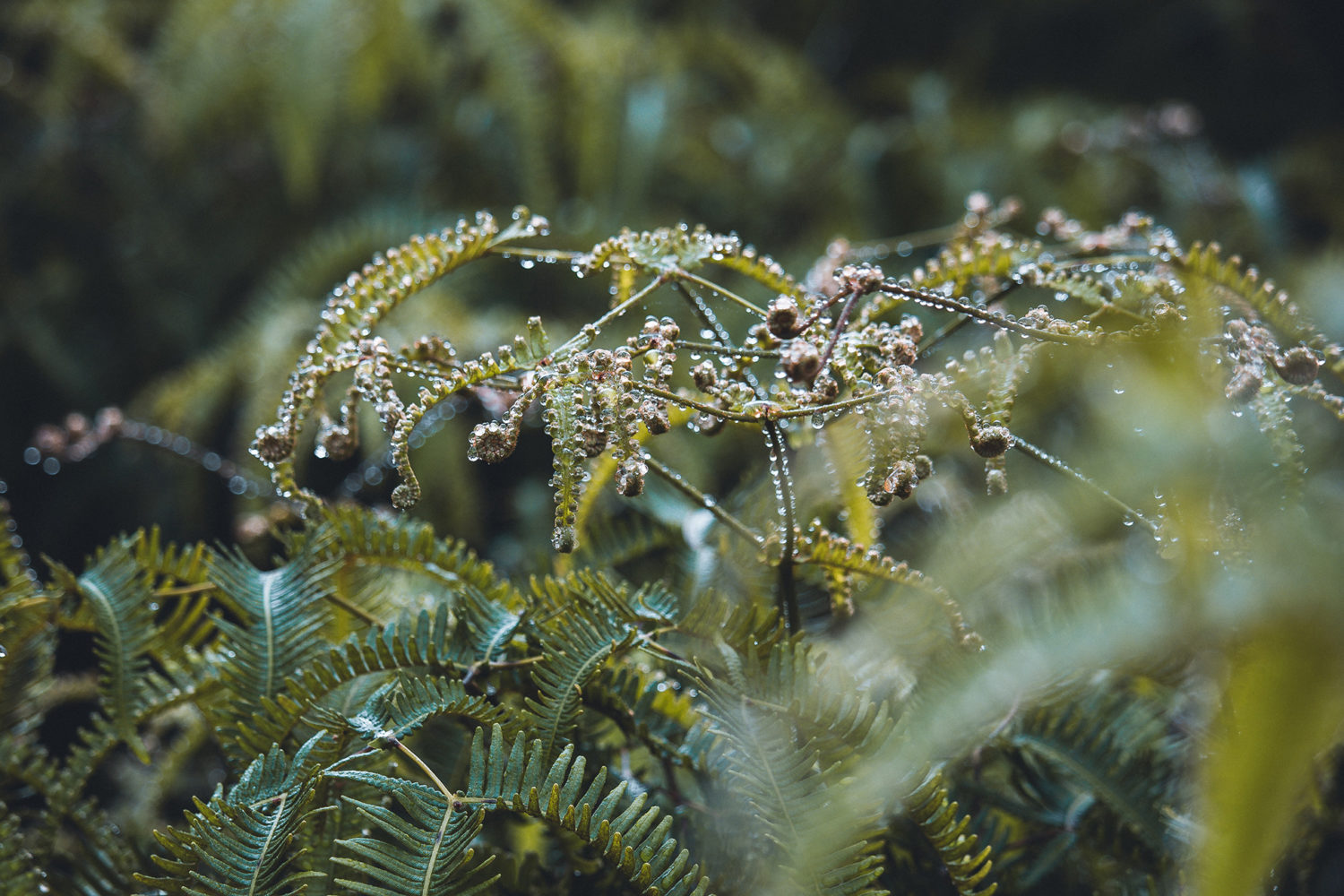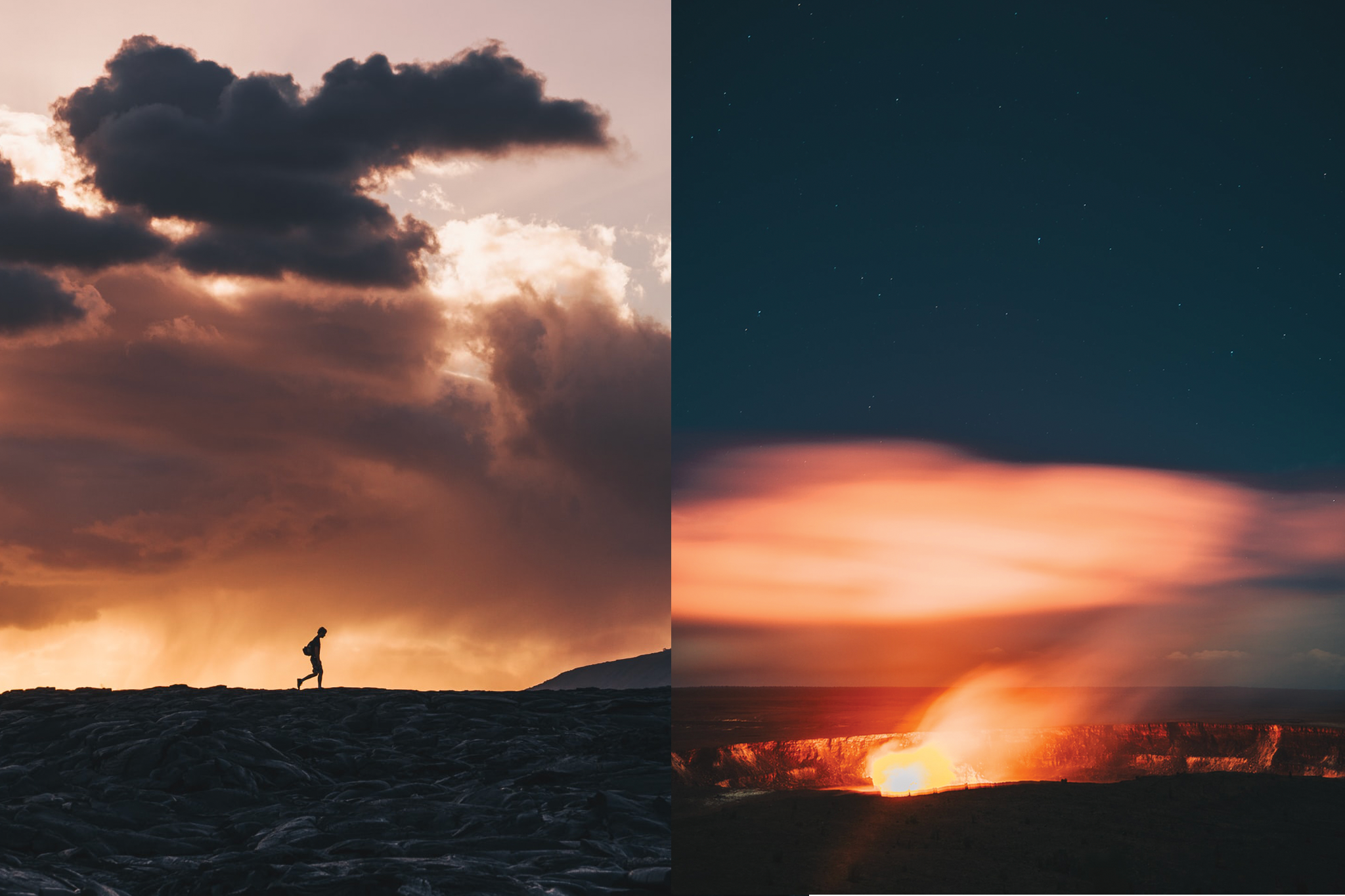Mo‘olelo are Hawaiian tales powered by keen and vigilant observations of the patterns in our natural world. They also possess scientific truths within.
From the moment we’re born, we are influenced by the world around us, collecting ideas, beliefs, and interests that become woven into our sense of self. We are everything we have ever experienced, all at once. As we move though the world, all the identities that define us overlap—sometimes in ways that don’t make sense.
For a few conflicted years, I struggled with two powerful parts of my identity. I am a product of the 21st century, taught to think logically and trust in science as objective truth. I am also a Native Hawaiian, taught that truth comes from your naʻau, your gut, not your mind. On the Venn diagram, I viewed these identities as mutually exclusive.
I found a way to cultivate both of these identities as a naturalist guide working on Hawaiʻi Island, but the Hawaiian and the naturalist in me always remained separate. As part of my job I took thousands of guests every year to some of the most spectacular sites, giving fascinated visitors the ecological and geological facts in addition to the historical and cultural background. To prepare, I poured countless hours into studying the science behind the island’s natural phenomena along with the moʻolelo we as Hawaiians have used to understand these same processes. Although I was passionate about both disciplines, it was hard to view them as truly equal. After all, they came from vastly different sources: academic texts versus books of mythology. Non-fiction versus fiction. It was clear what the world saw as truth, and I admit that I bought into that hierarchy. It wasn’t until I was forced to choose a side that I realized I couldn’t.


In 2016, as lava began to flow once again to an area of Hawaiʻi Volcanoes National Park that was accessible by foot, I led visitors to flowing lava too many times to count. I picked up guests from their resorts in Kona and drove hours across the island to Kalapana. Along the way, I passionately interpreted our island’s geology, geography, botany, and human history. Giving context to the unfathomable phenomenon my guests were about to witness was critical. The birth of new earth! The experience was almost inconceivable. Before reaching any lava, I recounted the Holo Mai Pele, the myth of Pele’s journey to our islands. Understanding the cultural significance, my guests were always respectful…until that one guy.
At the end of the night the guy looked me in the eyes and asked me, “So does anyone still really believe this crap?”
I’m guessing that because of my white skin, he thought we were on the same team. That I was a nonbeliever. That, maybe with a wink and a nod, we could both have a good chuckle.


I was speechless. I muttered some half-hearted response, dropped the guest off at his hotel, and never saw him again. Yet his comment stayed with me. His words lingered, irritating me like a kiawe thorn through the slipper. The process of extracting the thorn came with the realization that I was conditioned to agree with him. Academia taught me that mythologies were nothing more than poetic ramblings. However, this disquieted an intuition deep in my na‘au. This intuition told me that these myths were more than mere speculations of uncivilized nature dwellers. Fueled by a new discomfort and increasing anger, I did some research to see if anyone else felt as conflicted as I did.
I found the answer to my anxieties in a paper published by the prolific volcanologist Don Swanson titled “Hawaiian oral tradition describes 400 years of volcanic activity at Kīlauea.” In just five short pages, Swanson put into words what I felt was true. He described how the moʻolelo of Pele and Hiʻiaka accurately explained “the two largest volcanic events to have taken place in Hawaiʻi since human settlement”: the ʻAilāʻau flow and the formation of Kīlauea’s modern caldera. The stories supported the science, and the science supported the stories.


There are many versions of the Holo Mai Pele, with details sometimes varying greatly. Yet the major events remain consistent.
When Pele was a newcomer to the Hawaiian islands, she searched the entire island chain for a home before finding her way to Kīlauea. When she finally settled at Halema‘uma‘u, Pele sent her baby sister, Hiʻiakaikapoliopele, to Kauaʻi to fetch her distant lover, Lohi‘au, a chief of Kaua‘i.
However, Hiʻiaka took so long to return that Pele suspected foul play and broke the one promise she made to Hiʻiaka. She burned down Hiʻiaka’s precious ʻōhiʻa lehua forest in Puna. Upon her return, the faithful Hiʻiaka was so enraged that she marched to the summit of Kīlauea, and in full view of Pele, made love to Lohi‘au. Pele tossed Lohi‘au into the summit crater, Kalua o Pele, and buried his body. Hiʻiaka dug furiously to recover Lohi‘au, tossing boulders skyward as she dug deeper and deeper. As Hiʻiaka continued digging through the strata, groundwater threatened to flood Pele’s crater and extinguish her forever. Ultimately, Hiʻiaka was persuaded by her sisters to give up the dig and reconcile with Pele.
So goes the sensational story of gods and mortals battling on earth. Were Hawaiians really around to witness this, or is the Holo Mai Pele meant to simply provide an explanation for the observed geography? The meticulous journal of a missionary from London, combined with modern science, shows us the tale isn’t as fictitious as some may believe.
Academia taught me that mythologies were nothing more than poetic ramblings. However, this disquieted an intuition deep in my na‘au.
In 1823, Reverend William Ellis and his missionary party were the first Europeans to visit the site of the sisters’ alleged confrontation, the summit of Kīlauea. Ellis and his party documented what they saw, but more importantly, what they heard. Ellis’ Hawaiian guides recounted the history of Kīlauea to Ellis and explained that the deep summit caldera before them had existed, “for many kings’ reigns past.”
Thus, the Holo Mai Pele moʻolelo was given an anchor in time, revealing two critical geologic truths: Kīlauea spewed a massive lava flow (called the ʻAilāʻau flow) that blanketed and burned the ʻōhiʻa forests of Puna, and very soon after, there was an explosive and deep caldera collapse, creating a pit at the summit that remains today.
Despite the sequence of events retold in our native myths and recorded by Ellis, it was accepted scientific knowledge that although the ʻAilāʻau flow dates back to the 1400s, the modern caldera was formed much later in 1790 due to a single catastrophic event. However, when the science was reexamined by Swanson in the early 2000s, it became clear that the geologic timeline and chain of events matched those of the mo‘olelo. Kīlauea’s caldera was indeed created over 500 years ago (sometime between 1470 and 1500 C.E.), matching the time period of the ʻAilāʻau flow.


Swanson lamented not paying attention to the native intelligence earlier. “More recent geologic work shows that the oral traditions are broadly consistent with the improved understanding,” he wrote in his conclusion. “We geologists were somewhat sidetracked by not taking the oral traditions into account.
To be fair, moʻolelo are shrouded in metaphor, layered in double entendre, and can be difficult to decipher. But the reason for these poetic devices is more carefully calculated than you think. Modern science has the benefit of written language and can afford to be dry, methodical, and verbose. Moʻolelo must use every tool to appeal to human nature. Delivered through song, dance, and chant, moʻolelo are designed to be visceral, impactful, and spectacular. Hula, mele, and oli are memorable, shareable, and teachable. They are publication, distribution, and peer review of preserving observations and conclusions for generations to come. Science and Hawaiian storytelling arrive at the same destination, even as they use different vehicles to get there.


On a macro level, both science and myth explain our natural world, thereby making it less frightening to inhabit. Cracks in the ground oozing out molten lava are not so scary when you know about Pele or magma and the mantle plume. Science and myth also serve as protective measures. Nature is a dangerous place. For a long time in human history, surviving into adulthood was tricky. When discoveries improve lives, they need to be shared with the community and passed on to the next generation to ensure their health and safety. Ideally, in this way, each generation is wiser than the next in perpetuity. When volunteering at a fishpond I learned of a moʻolelo rooted in science that kept generations of Hawaiians fed.
At Heʻeia fishpond on Oʻahu’s east side, the story goes, there is a kiaʻi (guardian) of the pond called Meheanu. A shapeshifter, she travels the coast in many forms, among them a moʻo (reptile) and a puhi (eel). When Meheanu is residing as a moʻo in the area, her urine will turn the foliage of the surrounding hau trees yellow. This is a sign not to fish. When the hau are green, Meheanu is out and about and people may resume fishing. On the surface, this story is pretty straightforward, but looking deeper reveals a profound indigenous understanding of the biogeochemical processes at play.
Science and Hawaiian storytelling arrive at the same destination, even as they use different vehicles to get there.
Nitrogen is a critical nutrient in loko iʻa. The amount of nitrogen in a pond influences the growth of limu and decomposition of dead plants and animals. Ammonia is a nitrogen compound commonly found in urine, especially among aquatic organisms. Increased ammonia means increased nitrogen in the pond, which triggers phytoplankton blooms. The pua (baby fish) feast on phytoplankton, becoming fat and healthy. Meanwhile, the nearby plants are also affected as the excess of nitrogen turns their leaves yellow.
And so, this once simple moʻolelo now reveals a complex understanding of not only the pond’s biological processes but also of responsible ecosystem management. The story warns that when Meheanu is present, when the source of fish food is booming, it is important to steer clear and let the fish grow. When Meheanu departs her sojourn, the hau turns green, the nitrogen levels equalize, and the fattened fish provide the most food for the greatest number of people. In this way the community stays healthy, the ecosystem remains in cyclical harmony, and all beings within the biosphere thrive. Tragically, “thriving” is not a word used by many scientists today to describe Hawaiʻi’s biosphere.
After the Hawaiian archipelago was encountered by the West in 1778, life in the islands changed rapidly. If the last couple centuries were an experiment, the data is rolling in, and it disproves the hypothesis. Modern systems do not always provide a patently better way to live. A future in Hawaiʻi that is enjoyable to inhabit depends on making massive changes to how we interact with our ecosystems. Science can help get us there, but not without the critical consideration of indigenous ecological knowledge. Thankfully, it seems the world is waking up to the importance of indigenous ʻike.


In 2016, the International Union for the Conservation of Nature’s World Conservation Congress (IUCN’s WCC) was held on Oʻahu. Over 10,000 leaders from over 170 countries gathered to discuss the status of the natural world and the measures needed to safeguard its future.
A major policy outcome of the WCC were the Hawaiʻi Commitments. In it, three critical issues were highlighted for worldwide conservation in the coming decades. The first speaks directly to the unsettled feeling I had as a naturalist and a Hawaiian. The commitment recognizes that humans have a relationship with nature, and indigenous knowledge combined with modern science is vital for the success of future conservation efforts.
Progress demands the consideration of Hawaiian intelligence as it calls upon us to examine “the nexus between biological and cultural diversity, and how their conservation and sustainability requires a combination of traditional wisdom and modern knowledge.” It is fitting that Hawaiʻi has become a focal point in what is now known as biocultural restoration; a place the world turns to for leadership and guidance when incorporating humanity and the indigenous connection to nature into conservation efforts.
Delivered through song, dance, and chant, moʻolelo are designed to be visceral, impactful, and spectacular
I am no longer the conflicted Hawaiian naturalist I was in 2016. Now I see that I can simultaneously be a 21st century student of logic and science as well as a descendant of Hawaiian storytellers, who were the original scientists and ecologists of our islands. If my confused guest asked me that question today, I would have a better answer. “Do people still really believe in this crap?” I would look him confidently in the eyes and calmly answer, “I do.”
Yes, moʻolelo are stories in the poetic sense, but digging deeper uncovers the scientific truths that are contained within. The stories are powered by keen and vigilant observations of the patterns in our natural world. Every story has lessons and consequences that serve to protect the population and improve the lives of future generations, much like the goals of science today. The key difference is that science often starts with a question centering why and then seeks to prove it. Moʻolelo start with no questions at all, resting instead on quiet observations.
For too long, modernity has seen itself as separate from the biosphere, leading to the extractive habits that have damaged our natural world.
There is a place for both of these methodologies within our modern world. We should not prioritize one over the other. And so, I am proud to be a student of science. I am proud to be Hawaiian. And I recognize that these complementary identities put me in a powerful position to affect meaningful change. Through questioning and testing, we end up with a firm understanding of the world around us. Through observation and contextualization, we come to comprehend our role within nature and the importance of conscientious practices designed to maintain ecological equilibrium.
For too long, modernity has seen itself as separate from the biosphere, leading to the extractive habits that have damaged our natural world. These practices may potentially eliminate our humble place within the biosphere forever. The indigenous peoples of the world know we are just a piece of the puzzle. We are an integral part of Earth’s processes. Every decision we make must consider our impact on these processes. Weaving that precious knowledge back into our understanding may be our best shot at survival.

